When, Why and How to Use Gift Cards as Referral Rewards
Gift cards are a popular reward choice in today’s referral programs.
They’re a great alternative to rewarding with cash, and work well when:
- Customers aren’t expected to purchase again in the near future,
- You need to reward someone who isn’t directly paying for your product (ie. company pays the bill), or
- You just want to give users the flexibility to choose their favorite reward.
We’ve helped leading brands launch referral programs powered by third-party gift card rewards, and are excited to announce new changes to the SaaSquatch portal that make these even easier to set up and launch for optimal results.
Plus, we reveal brand new industry data on what kinds of digital companies are using gift card rewards and why.
Keep reading to learn why you should consider gift card rewards for your referral program, when to use them, and what this looks like in SaaSquatch.
Why use gift card rewards?
When we talk about gift cards, we don’t mean pre-loaded cards to be used with your own brand. We’re referring to third-party gift cards for brands like Amazon, Starbucks, iTunes, or Visa.
These are a popular referral reward choice because they:
- Are easy to manage: When you integrate with a third-party gift card provider, you don’t need to worry about rewards interfering with your billing systems or having to discount orders and adjust invoices.
- Act as immediate gratification: Especially if the referring customer isn’t expected to make another purchase with you in a while, gift cards are a reward they can redeem right away after referring new friends.
- Give the illusion of free money: While offering a discount means the user still has to pay something out of their own pocket, receiving a gift card is just like getting free money.
- Lower your risk of fraud: Unlike coupon codes and/or links, gift cards aren’t subject to unauthorized sharing or broadcasting across user networks.
- Are more secure than cash: Emailing digital gift cards means there’s no need to collect and store personal user information like mailing address and/or bank information that may be needed to deposit cash.
The main downside to gift card rewards is that they don’t incentivize further interaction with your product. But sometimes this is still the best option depending on your industry and what kind of billing systems you are dealing with.
When are gift cards used as referral rewards?
While there are no hard rules for who can offer gift card rewards for their referral program, we’ve gained some insight into how they’re being used in today’s digital economy.
After analyzing over 100 consumer referral programs, we found that gift cards are often used to reward Promoters (a.k.a. The referring friend) for referrals in industries with low-purchase frequencies. Some examples include:
- Telecom providers (ie. Sprint, Verizon, T-Mobile)
- Online mattress retailers (ie. Endy, Casper, Amerisleep)
- Online medical appointment booking services (ie. OpenCare)
- Travel booking websites (ie. Dream Vacations)
- Online insurance and mortgage brokers (ie. Trussle)
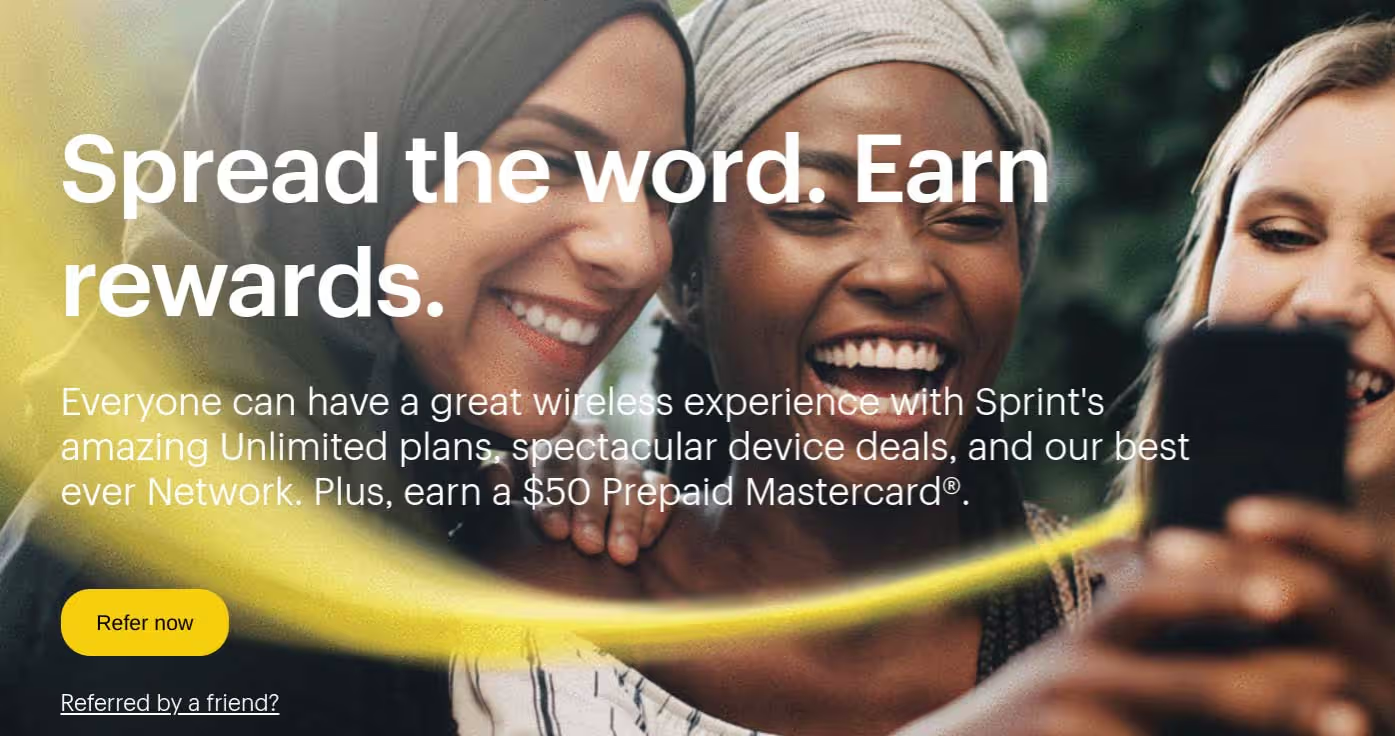
This makes sense because things like mattresses, dentist appointments, and large-scale vacations aren’t purchases that people make every week. In these cases, offering a discount coupon to the promoter for referring a friend won’t excite them, as they’ll need to wait months or years before redeeming it.
Consider this: You just bought a new mattress online, and are invited to refer a friend for $50 off your next purchase. Your friend makes a purchase, and you’ve now earned $50 in store credit that you can’t use until you need a new mattress (if you even remember you have it when the time comes). There’s little motivation for you to continue making referrals for more store credit that you don’t need right now.
This is where gift cards shine as the perfect way to provide immediate gratification to the promoter for each new friend they refer, which encourages continuous referral from your happy customers.
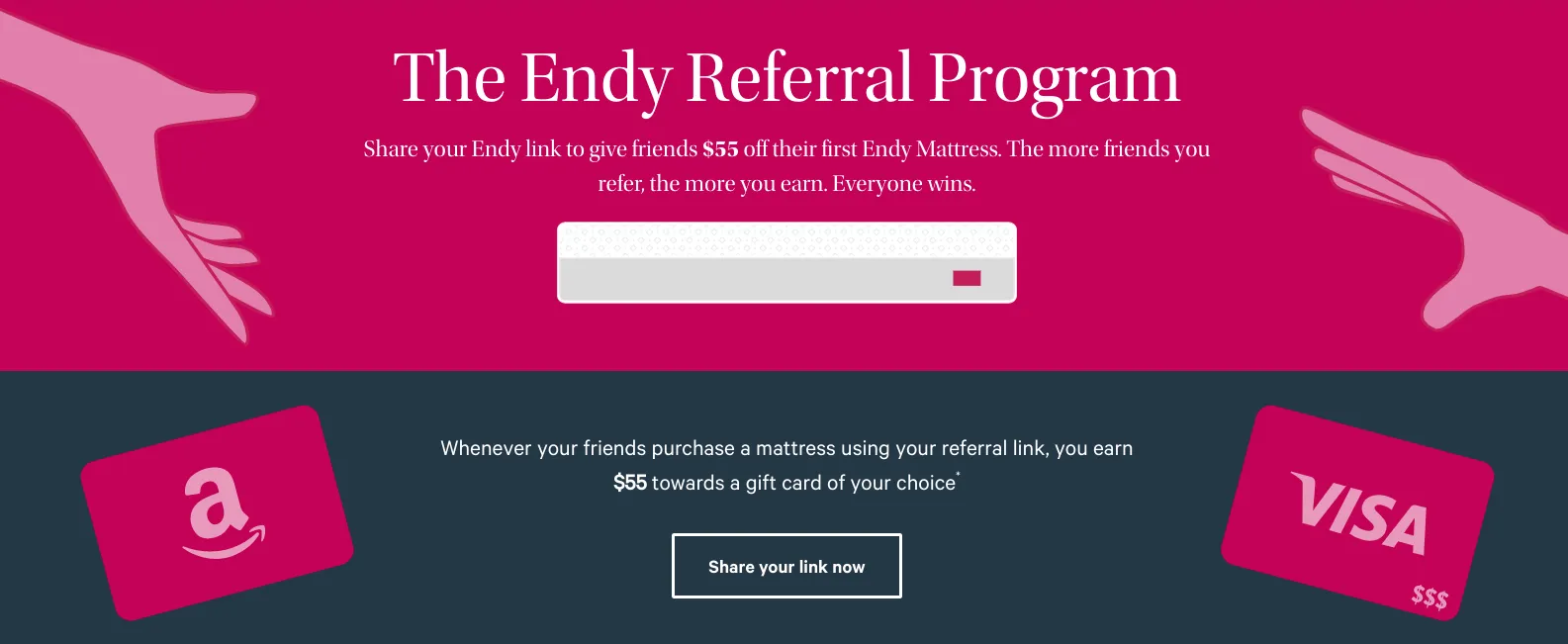
In these scenarios, the referred friend is often rewarded with a discount in order to incentivize their first purchase as a new customer. This creates a double-sided program that plays to the different motivations of both parties.
Want access to all new data we uncovered about referral programs? Download the State of Referral Marketing Report!
Gift card rewards are also known to come in handy when you need to incentivize a specific stakeholder in a B2B environment.
For example, if you sell a CRM tool used by mid-level product managers, these employees will be more motivated to make a referral when there’s something in it for them. They won’t be thrilled by a discount on their software subscription because they aren’t responsible for paying the bill. Instead, a gift card reward is something they can personally benefit from.
While our data analysis sheds light on the trends of today’s gift card reward usage, this doesn’t mean that gift cards can only be used in certain industries. Offering the “best” reward for your referral program always means tuning in to what your customers want and what makes the most sense for their buying cycle.
Should you offer a selection of gift cards to choose from?
In analyzing referral program gift card usage, we found that on average, only 35% of programs offer a selection of gift cards for users to choose from.
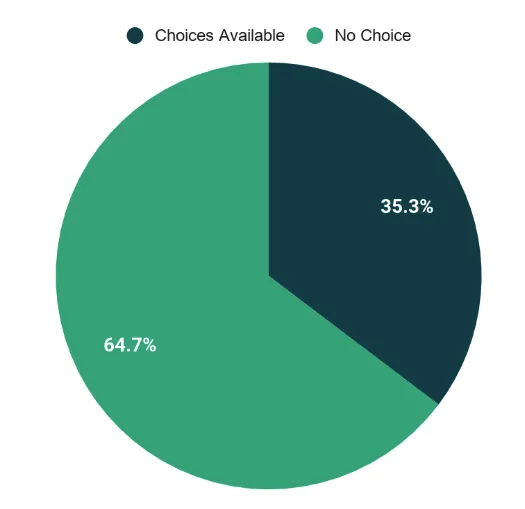
For example, online mattress retailer Endy lets the promoter earn $55 towards a gift card of their choice upon a successful referral, such as prepaid virtual Visa, Amazon, Cineplex Odeon, Air Canada, and more.
On the other hand, their competitor Casper offers promoters a static $75 Amazon gift card for successful referrals.
A small sample size (<20) was used for our analysis of gift card rewards, but the current trend suggests offering no selection to choose from is the most common.
This is likely due to the technical and logistical challenges of implementing a customer-facing gift card picker such as this one used by OpenCare:
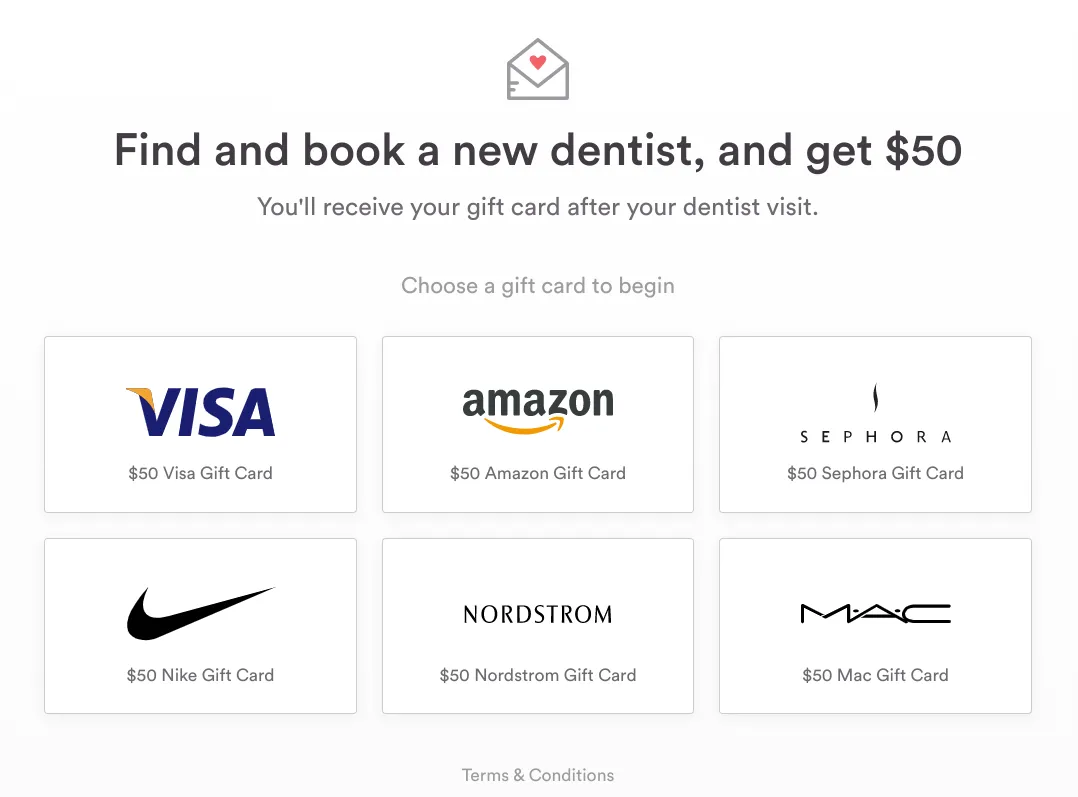
We suspect that many companies in our sample would prefer to offer a selection of gift cards, but don’t have the resources or time to fully implement it.
Even if you only offer one type of gift card, choosing a vendor like Visa or Amazon is the perfect way to still provide a high degree of choice to customers, while keeping your rewards simple.
How to Use Gift Card Referral Rewards with SaaSquatch
When setting up your referral program in SaaSquatch, the gift card integration lets you automatically send gift card rewards to qualifying program participants.
With our TangoCard integration, you can choose from a wide range of brands like Amazon, Apple iTunes, Starbucks, Prepaid Visa, Spotify, and more.

Set up your program with a visual gift card picker
When setting up the reward for a referrer or referred friend, choosing the Gift Card option displays a visual gift card selector where you can choose your preferred brand, currency, and custom amount. Many brands are available in multiple currencies, but you can filter for a precise list.
Prevent Fraud with a Pending Reward Window
To combat fraud and maximize program ROI, you can add conditions that hold the gift card reward(s) until you can confirm that the referral is successful.
Much like a physical reward, it can be almost impossible to retract a gift card reward once it’s given out. As soon as it’s received by the user, they can spend it. By setting a length of time for which the reward is pending, you can be confident that rewards are only given out when all referral conditions are met.
For example, you may hold the promoter’s gift card reward as pending for 30 days in case the referred friend returns their product or cancels their subscription:
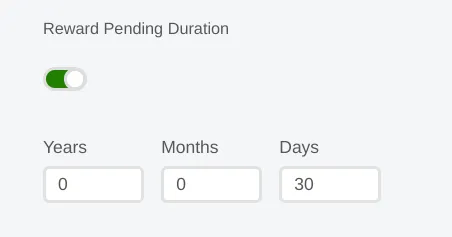
Most referral programs specify a window during which the reward is held before sent to the user. This helps you ensure that all referred customers are actually contributing to your bottom line, and prevents anyone from taking advantage of your referral program.
Set up tiered rewards to maximize ROI
Use SaaSquatch to create tiered referral programs that offer different gift card rewards depending on what the referred friend buys, how much they spend, or who they are.
For example, a telecommunications provider might set up a program that rewards promoters with a $50 gift card if their friend signs up for an internet contract, and reward them with a $100 gift card if their friend signs up for a TV/Internet bundle.
Learn more about how referral tiers can work for you in this article.
Final Thoughts
Third-party gift cards can be a great reward option for customers who aren’t expected to purchase again in the near future, who aren’t directly paying for your product (ie. company pays the bill), or when you just want to let users choose the reward most appealing to them.
Do you think gift cards are an effective reward for referral programs? Tweet us and let us know!